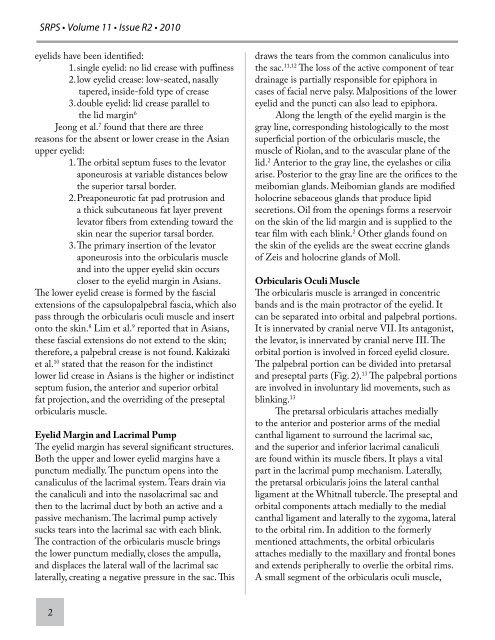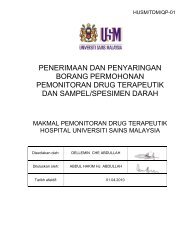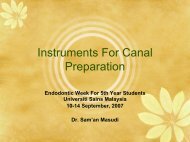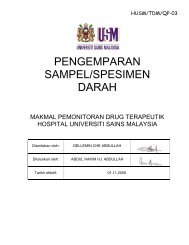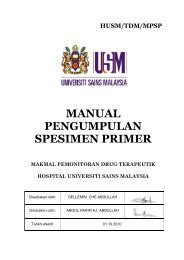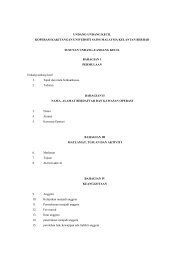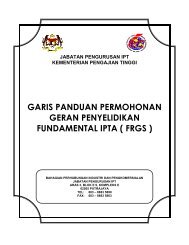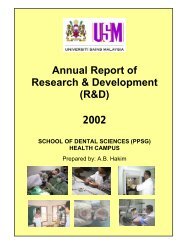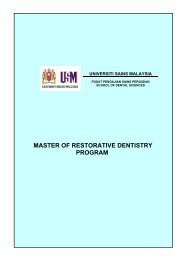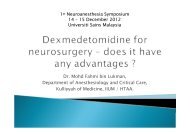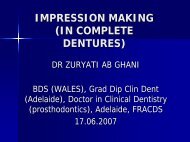Vol 11-R2- Eyelid
Vol 11-R2- Eyelid
Vol 11-R2- Eyelid
Create successful ePaper yourself
Turn your PDF publications into a flip-book with our unique Google optimized e-Paper software.
SRPS • <strong>Vol</strong>ume <strong>11</strong> • Issue <strong>R2</strong> • 2010<br />
eyelids have been identified:<br />
1. single eyelid: no lid crease with puffiness<br />
2. low eyelid crease: low-seated, nasally<br />
tapered, inside-fold type of crease<br />
3. double eyelid: lid crease parallel to<br />
the lid margin 6<br />
Jeong et al. 7 found that there are three<br />
reasons for the absent or lower crease in the Asian<br />
upper eyelid:<br />
1. The orbital septum fuses to the levator<br />
aponeurosis at variable distances below<br />
the superior tarsal border.<br />
2. Preaponeurotic fat pad protrusion and<br />
a thick subcutaneous fat layer prevent<br />
levator fibers from extending toward the<br />
skin near the superior tarsal border.<br />
3. The primary insertion of the levator<br />
aponeurosis into the orbicularis muscle<br />
and into the upper eyelid skin occurs<br />
closer to the eyelid margin in Asians.<br />
The lower eyelid crease is formed by the fascial<br />
extensions of the capsulopalpebral fascia, which also<br />
pass through the orbicularis oculi muscle and insert<br />
onto the skin. 8 Lim et al. 9 reported that in Asians,<br />
these fascial extensions do not extend to the skin;<br />
therefore, a palpebral crease is not found. Kakizaki<br />
et al. 10 stated that the reason for the indistinct<br />
lower lid crease in Asians is the higher or indistinct<br />
septum fusion, the anterior and superior orbital<br />
fat projection, and the overriding of the preseptal<br />
orbicularis muscle.<br />
<strong>Eyelid</strong> Margin and Lacrimal Pump<br />
The eyelid margin has several significant structures.<br />
Both the upper and lower eyelid margins have a<br />
punctum medially. The punctum opens into the<br />
canaliculus of the lacrimal system. Tears drain via<br />
the canaliculi and into the nasolacrimal sac and<br />
then to the lacrimal duct by both an active and a<br />
passive mechanism. The lacrimal pump actively<br />
sucks tears into the lacrimal sac with each blink.<br />
The contraction of the orbicularis muscle brings<br />
the lower punctum medially, closes the ampulla,<br />
and displaces the lateral wall of the lacrimal sac<br />
laterally, creating a negative pressure in the sac. This<br />
2<br />
draws the tears from the common canaliculus into<br />
the sac. <strong>11</strong>,12 The loss of the active component of tear<br />
drainage is partially responsible for epiphora in<br />
cases of facial nerve palsy. Malpositions of the lower<br />
eyelid and the puncti can also lead to epiphora.<br />
Along the length of the eyelid margin is the<br />
gray line, corresponding histologically to the most<br />
superficial portion of the orbicularis muscle, the<br />
muscle of Riolan, and to the avascular plane of the<br />
lid. 2 Anterior to the gray line, the eyelashes or cilia<br />
arise. Posterior to the gray line are the orifices to the<br />
meibomian glands. Meibomian glands are modified<br />
holocrine sebaceous glands that produce lipid<br />
secretions. Oil from the openings forms a reservoir<br />
on the skin of the lid margin and is supplied to the<br />
tear film with each blink. 2 Other glands found on<br />
the skin of the eyelids are the sweat eccrine glands<br />
of Zeis and holocrine glands of Moll.<br />
Orbicularis Oculi Muscle<br />
The orbicularis muscle is arranged in concentric<br />
bands and is the main protractor of the eyelid. It<br />
can be separated into orbital and palpebral portions.<br />
It is innervated by cranial nerve VII. Its antagonist,<br />
the levator, is innervated by cranial nerve III. The<br />
orbital portion is involved in forced eyelid closure.<br />
The palpebral portion can be divided into pretarsal<br />
and preseptal parts (Fig. 2). 13 The palpebral portions<br />
are involved in involuntary lid movements, such as<br />
blinking. 13<br />
The pretarsal orbicularis attaches medially<br />
to the anterior and posterior arms of the medial<br />
canthal ligament to surround the lacrimal sac,<br />
and the superior and inferior lacrimal canaliculi<br />
are found within its muscle fibers. It plays a vital<br />
part in the lacrimal pump mechanism. Laterally,<br />
the pretarsal orbicularis joins the lateral canthal<br />
ligament at the Whitnall tubercle. The preseptal and<br />
orbital components attach medially to the medial<br />
canthal ligament and laterally to the zygoma, lateral<br />
to the orbital rim. In addition to the formerly<br />
mentioned attachments, the orbital orbicularis<br />
attaches medially to the maxillary and frontal bones<br />
and extends peripherally to overlie the orbital rims.<br />
A small segment of the orbicularis oculi muscle,


